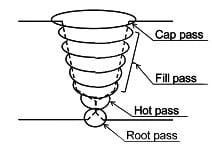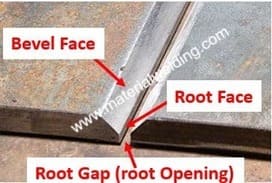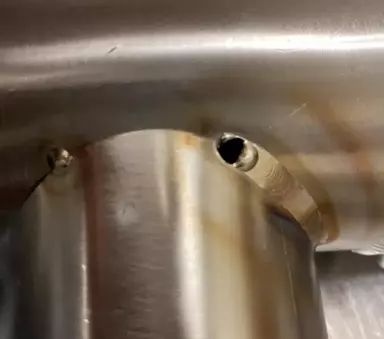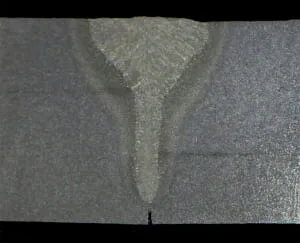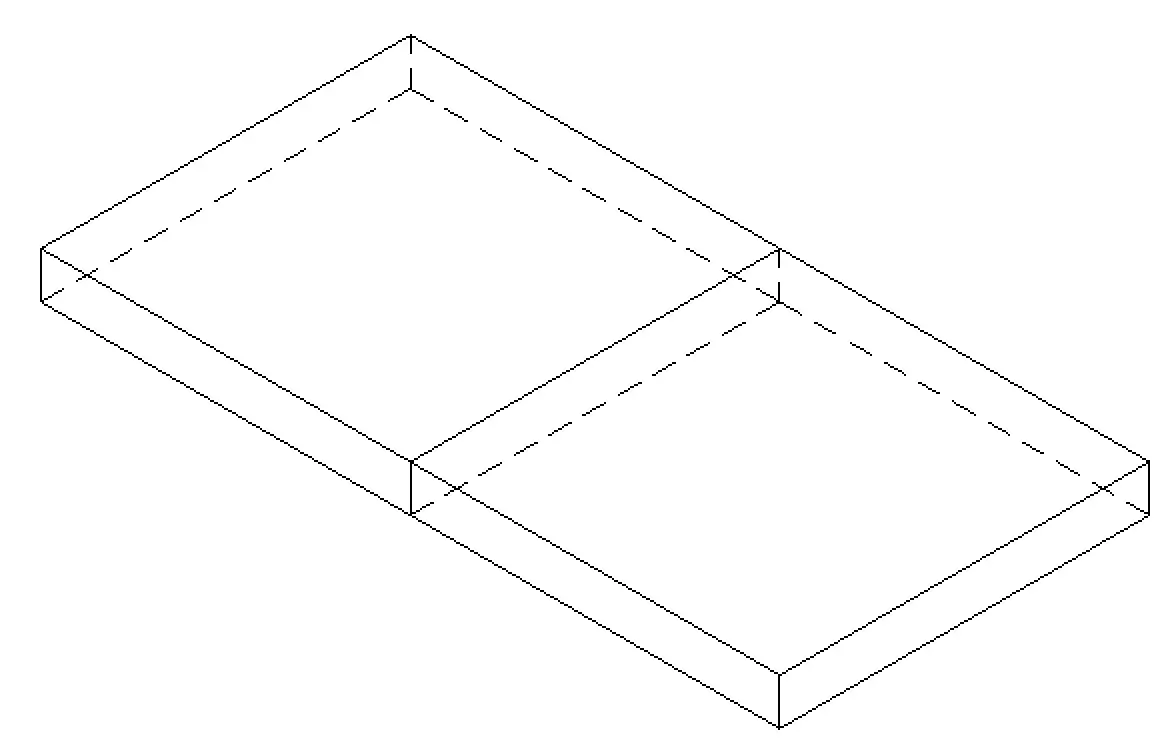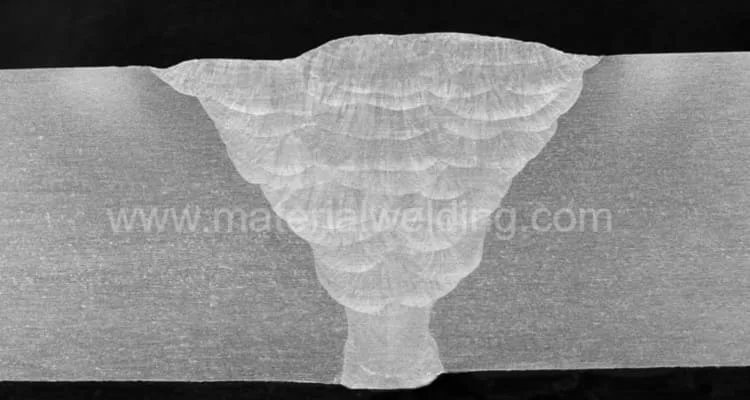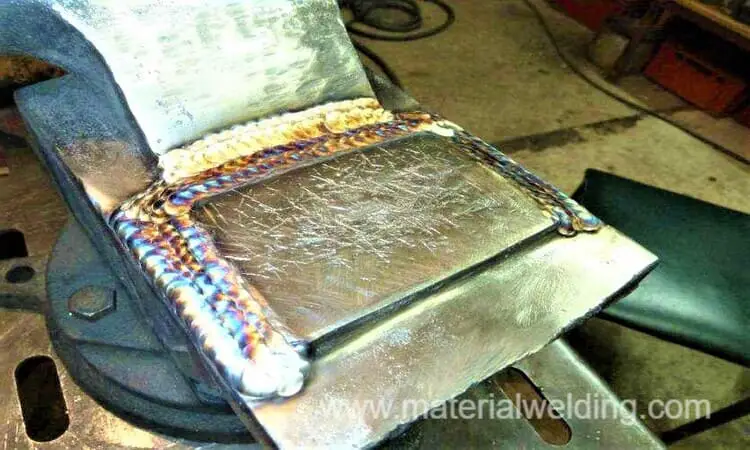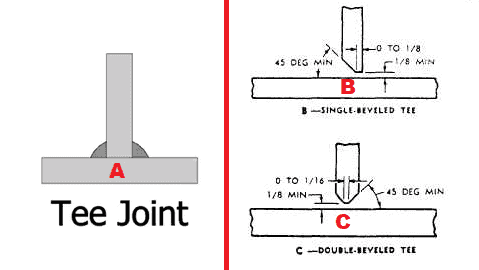Backing Bar in Welding
Backing Bar in Welding or Backing Strips are special shape materials (metal or ceramic or fiber glass) that is placed on weld root side to provide support for molten metal during root run welding.
Backing bar thus provide support for root run molten metal, prevent burn-through, ensure complete joint penetration (CJP Weld), prevent excessive or lack of root penetration and ensure high welding quality.
When full penetration weld is to be made from one side only, use of some type of weld backing may be imperative to control the amount of reinforcement and the shape of the root surface.
Types of Backing in Welding
Backing in welding are of different materials, different types, and shapes. The first classification we covered here is based on backing material types. Other classified based on backing objective is covered later in this post.
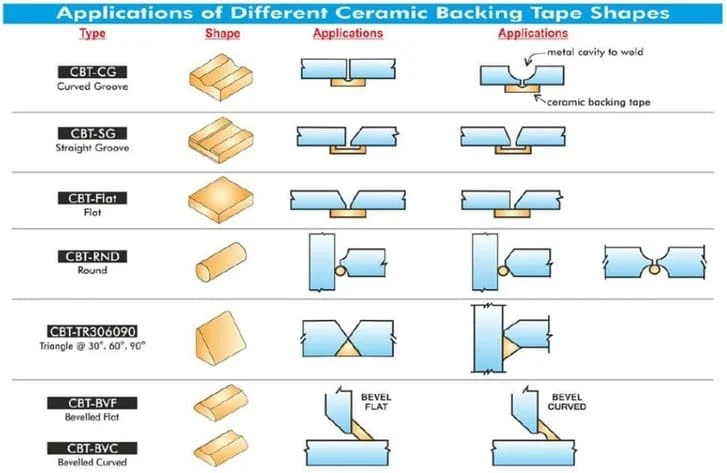
The various commonly used techniques involve use of the following types of backing bars or backing strips in welding:
- Base metal backing,
- Structural backing,
- Weld backing,
- Backing strip,
- Copper backing,
- Flux backing,
- Backing tapes.
- Consumable Inserts
Types of Backing Bar in Welding
Two types of backing may be used based on their purpose. They are:
- Permanent Backing Bar: E.g., base metal backing, structural backing, metal backing strips, etc.
- Temporary Backing Bar: E.g., Copper backing, ceramic backing and backing tape.
Permanent Backing Bar in Welding
Permanent backings strips are left in place after welding and usually made of same material as base metal.
These may be in the form of strips or extruded sections of aluminum when welding aluminum. Such backings may, however, sometimes cause lack of fusion at the root of the weld if the backing material is not properly cleaned or if the fit-up is poor.
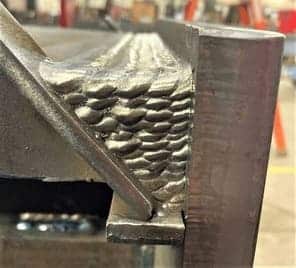
Permanent backing bars should not be used in corrosive service unless all edges of the backing strip are completely sealed (by applying sealing run on both sides of backing). Otherwise, crevice corrosion may take place at the root of the weld.
Temporary Backing Bar in Welding
Temporary backing is generally in the form of a bar made of copper (Note: Copper bars do not stick with carbon steel and easily removed after welding), or Ceramic or Fiber tapes.
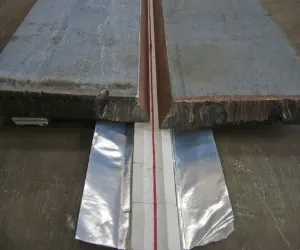
This bar is normally a part of the fixturing. Care should be taken during welding to avoid melting the backing bar and contaminating the Al weld metal. These backing also have holes to provide gas purging.
A groove may be machined into the backing bar to decrease the chilling effect at the root of the joint for good penetration. The groove should be designed to permit good fusion at the root of the weld and to provide the root reinforcement of desired height and shape.
Groove dimensions usually range from 4 mm to 13 mm wide and 0.25 mm to 2.25 mm deep. The actual dimensions will depend upon the thickness of the section being welded, the joint geometry, and the welding process.
Backing Bars for Welding
Backing bars may be used to remove heat from welds in thin sections. This may permit welding with sufficient current for a stable arc.
Water-cooled Cu-bars provide the greatest chilling effect; stainless steel bars, the least. However, excess chilling may result in lack of fusion at the root of the weld.
1. BASE METAL BACKING
The root face is kept sufficiently thick as shown in Figure below, to support the weld pool without burn-through. This technique is used for square or partially beveled butt joints, for fillet welds and for plug or slot welds.
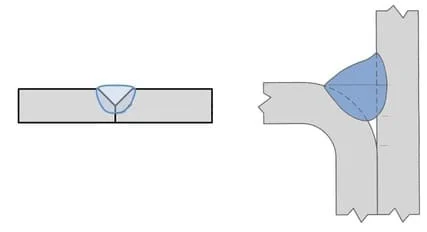
Care has to be taken that the root faces of groove welds are in close contact. The first pass, deposited sometimes with lower current, acts as a backing for the second pass deposited with higher current to get through penetration.
2. STRUCTURAL BACKING
In certain cases where design permits, another structural member can serve as a backing for the weld, as shown in Figure below.
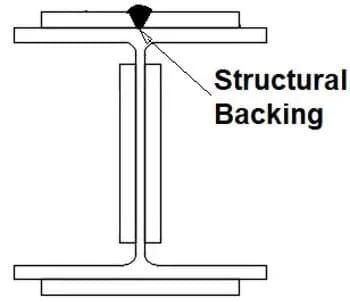
It is very important that the contact surfaces of the joint are clean, and the contact is intimate in order to avoid porosity and slag inclusions. The weld must also provide sufficient depth of fusion in the backing member.
3. WELD BACKING
The backing weld is deposited at lower current and with a moderately penetrating arc using the manual metal arc, CO₂-shielded arc or flux-cored arc process (see Figure below).
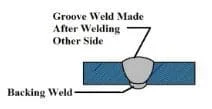
It may be in one or more passes to obtain sufficient depth to support the submerged-arc weld. The backing weld may be retained in the joint if it is of suitable quality.
If otherwise, it may be removed by oxygen or arc gouging, by chipping or by machining after the submerged-arc welds have been deposited. The resulting groove is filled up with a submerged-arc weld.
4. BACKING STRIP or BACKING BAR
The backing strip is of metal that is compatible with the metal being welded. The weld metal fuses into the backing strip, so that it becomes an integral part of the joint as shown in Figure below.
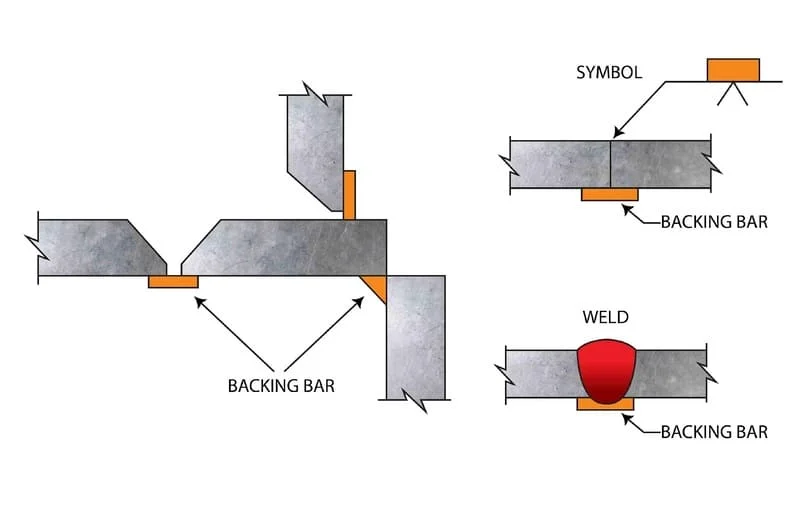
In this case, it is termed a permanent backing. In case it is intended to be a temporary backing, it may be removed finally by machining. Suitable root opening must be kept to ensure full penetration.
It varies between 1.6 and 4.8 mm, depending on joint thickness. It is important that the contact surfaces between the plates and the strip are clean and the contact is intimate; otherwise porosity and leakage of molten weld metal may occur.
5. COPPER BACKING
Copper backing shown in Figure below has several advantages. Its high thermal conductivity enables it to extract the heat rapidly from the molten weld pool. Also the molten steel weld metal does not fuse with the copper material. Hence it only serves as a temporary backing.
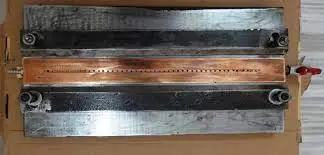
The copper backing bar is either as long as the joint; or it is of short length and designed to slide underneath the travelling arc. In still other applications, it may be in the form of a rotating wheel.
For high production applications, the copper bar is provided with internal water circulation to maintain it relatively cool. The bar is usually grooved as shown in the figure to obtain weld reinforcement on the underside of the joint.
It is important to ensure that the copper bar has sufficient mass to prevent melting of the copper material, which can result in contamination of the weld with copper. It must be borne in mind that mechanical properties of steel weld metal deteriorate when the Cu content exceeds a certain limit.
6. FLUX BACKING
In flux backing, dry granular SA flux is placed in a trough on flexible sheet material. This sheet material rests on a rubberized canvas hose, which can be inflated to hold the flux tightly against the back of the joint.
This technique will be discussed in detail while describing the one-side SAW used in Japanese shipyards.
7. BACKING TAPES
Ceramic back-up tapes consisting of a ceramic material on an aluminum foil backing are available in the U.S.A. The exposed aluminum foil edges are covered with a pressure sensitive adhesive covered with a removable liner. Lengths of strips are 0.5 to 1.0 meter.
These can be easily applied to joints or seams to provide shielding or back-up for one-side welding and root pass back-up for two-side welds to be deposited by TIG, MIG and other arc processes.
By using these tapes, arc gouging and further backside joint operations such as grinding are eliminated or minimized. They avoid the use of expensive and clumsy fixtures, back-up bars and gas purging of weld.
8. CONSUMABLE INSERS
Consumables inserts are metal inserts of same metallurgy as base metal and become parts of the weld.
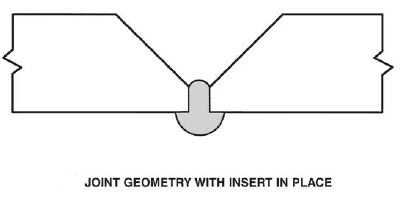
They provide support to the molten pool during root run welding and get fused together.
Read more: What are Consumable Inserts in Welding & Their Types.
Backing Bar Welding Symbol
Backing bar weld symbols are those symbols that appear on a drawing that indicate the presence of a backing bar. Backing Bar in Welding uses two systems for welding symbols: ISO 2553 and AWS A2.4.
Backing bar weld symbol according to AWS A2.4 shown in below figure (right hand side). The backing bar weld symbol is a square box placed opposite to main weld symbol (here V-groove weld symbol).
The presence of ”R” means removable backing. If R is omitted in backing symbol, its means permanent backing to be used.

Backing weld symbol as per ISO 2553 is shown in above figure right hand side. ISO 2553 uses:
- ”MR’‘: means removable Backing.
- ”M’‘: means permanent Backing (this is opposite to AWS Symbol, so be careful).
Backing Bar Size
Backing bars are an important part of the welding process, and their size can have a big impact on the quality of the weld.
The most common backing bar sizes are 1″ to 1.5”. The right choice of backing bar size depends on the thickness of the metal being welded, the type of welding being done, and the welder’s preference.
Backing bars that are too small can cause problems with the weld, such as poor penetration or burn through. Backing bars that are too large can make it difficult to control the weld pool and can lead to excessive weld penetration.
The size of the backing bar is an important factor to consider when welding. The backing bar helps to support the weld and prevent it from collapsing.
It also provides a surface for the weld to adhere to. The size of the backing bar will vary depending on the thickness of the metal being welded. A thicker metal will require a larger backing bar.
Ceramic Backing Bar Welding
Ceramic backing bars are used during welding to provide support for the weld pool and prevent weld metal from flowing into the parent material.
Ceramic backing bars can be made from a variety of materials, but they all serve the same purpose. Welders must be careful when installing ceramic backing bars, as they are fragile and can break easily.
There are many benefits to using ceramic backing bars during welding. First, they help to improve the quality of the weld by providing support for the weld pool. This prevents weld metal from flowing into the parent material, which can cause problems later on.
Second, ceramic backing bars can help to increase productivity by reducing the amount of time that is needed to complete a welding job. Finally, ceramic backing bars are less likely to cause damage to the parent material than other types of welding supports.
Copper Backing Bar Welding
Copper backing bars are used in welding to provide a heat-conducting and electrical-conducting path between the weld and the workpiece. This helps to prevent weld defects and improve weld quality.
Copper backing bars can be used for both gas tungsten arc welding (GTAW) and plasma arc welding (PAW). When selecting a copper backing bar for your application, it is important to consider the thickness, width, and length of the bar.
Thicker copper backing bars are better able to conduct heat away from the weld area, which can help to prevent weld defects. However, thicker bars are also more difficult to work with and can be more expensive.
Width is also an important consideration, as wider bars will provide better support for the weld area. Length is less important than thickness and width, but longer bars can be more difficult to maneuver.
Purpose of Backing Bar in Welding
Backing bars are an important part of welding. They help to support the weld and prevent it from collapsing. Here are top five purposes of backing bars in welding:
- To provide support for the molten weld pool during root run welding.
- To prevent the weld from collapsing.
- To distribute the heat evenly when welding exotic materials such as magnesium alloy.
- To prevent burn through during open root welding.
- To ensure full root fusion when requires complete joint penetration (CJP) weld.
Why Backing strip is used in welding?
Backing strip is used in welding for a variety of reasons. First, it helps to prevent weld defects by providing a smooth, consistent surface for the weld to form on and support molten metal during root run weld to avoid burn through.
Second, it helps to protect the base material from heat damage during welding. Third, it can help to improve the appearance of the finished weld by providing a clean, flush surface.
Backing strip is typically made from same base metals or copper, which have good thermal conductivity and are resistant to weld spatter and heat damage.
In some cases, other materials such as ceramic fiber or fiber glass may be used. The choice of backing strip material depends on the application and the type of welding being performed.
Backing strip is an important part of the welding process and can help to improve the quality of the finished weld.
Read more:
